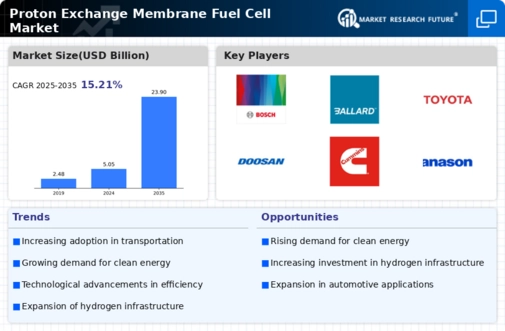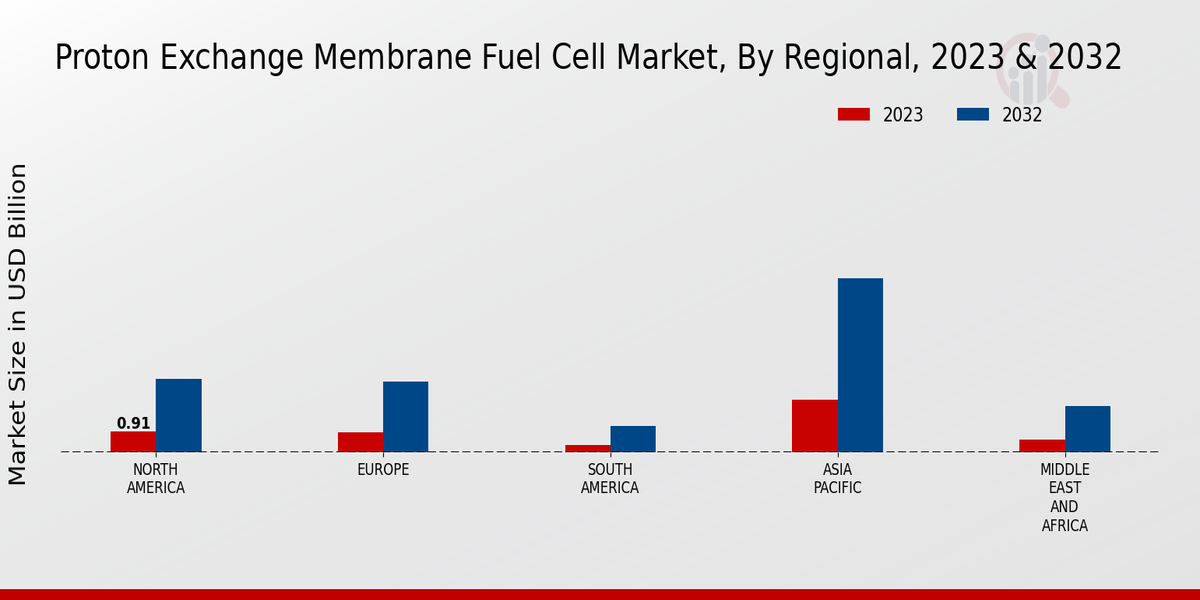Proton Exchange Membrane Fuel Cell Market Summary
The Global Proton Exchange Membrane Fuel Cell Market is projected to grow significantly from 5.81 USD Billion in 2024 to 27.59 USD Billion by 2035.
Key Market Trends & Highlights
Proton Exchange Membrane Fuel Cell Key Trends and Highlights
- The market is expected to experience a compound annual growth rate (CAGR) of 15.19% from 2025 to 2035.
- By 2035, the market valuation is anticipated to reach 23.9 USD Billion, indicating robust growth potential.
- in 2024, the market is valued at 5.81 USD Billion, reflecting the current investment landscape.
- Growing adoption of Proton Exchange Membrane Fuel Cells due to increasing demand for clean energy solutions is a major market driver.
Market Size & Forecast
| 2024 Market Size | 5.81 (USD Billion) |
| 2035 Market Size | 27.59 (USD Billion) |
| CAGR (2025-2035) | 15.21% |
Major Players
Bosch, Ballard Power Systems, Toyota, Doosan Fuel Cell, Cummins, Panasonic, SFC Energy, Nel Hydrogen, Honda, Hyundai Motor Group, Plug Power, Bloom Energy, Hydrogenics, Hexagon Purus, Azure Power



























Leave a Comment